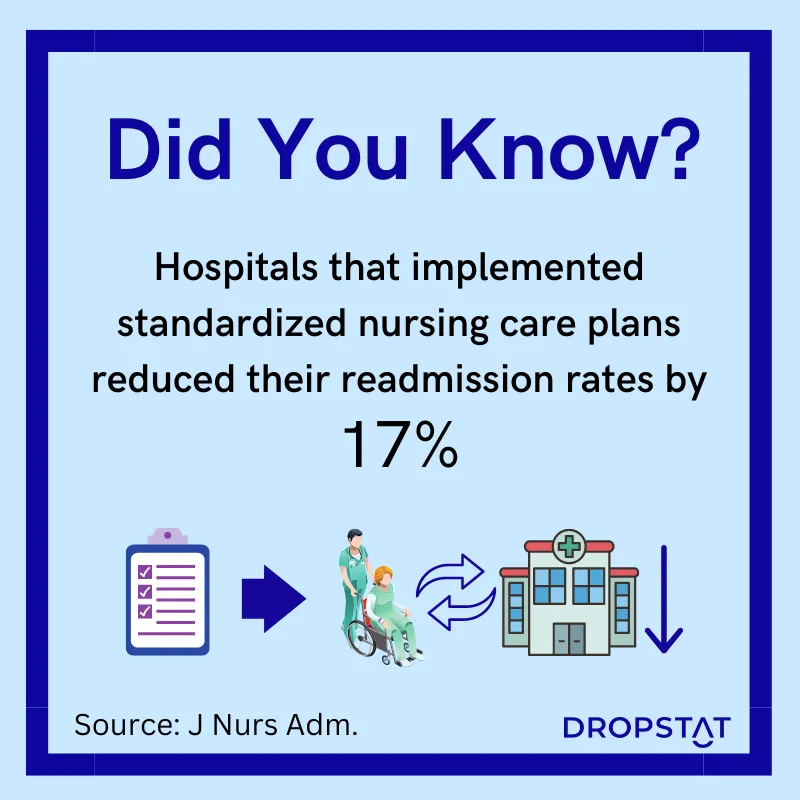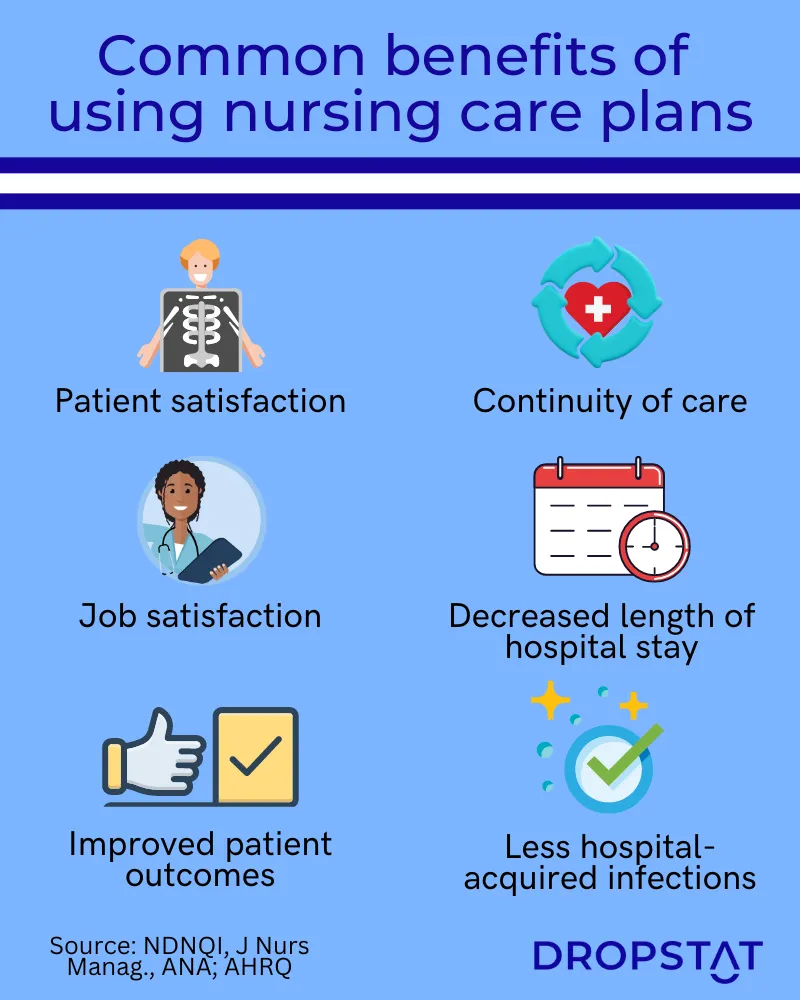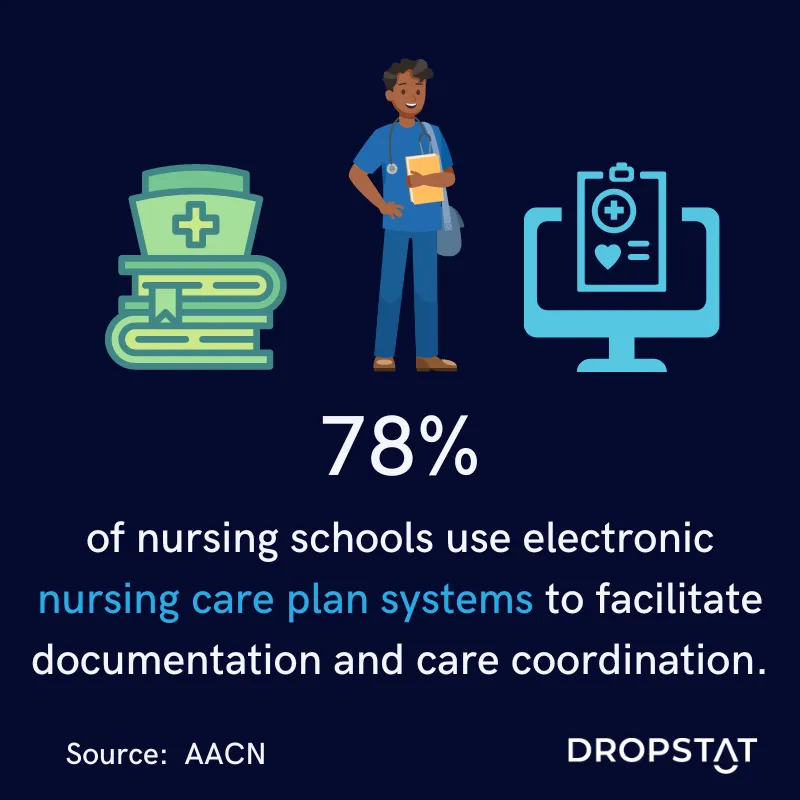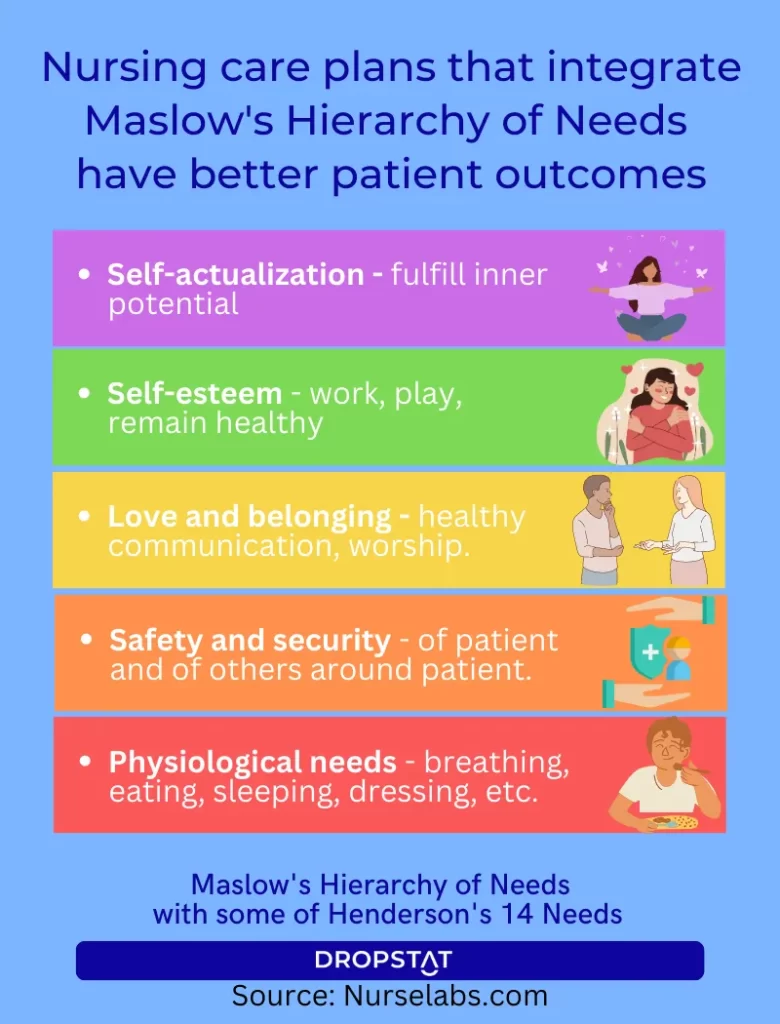Healthcare facility CEOs can unlock the potential for improving the nursing process through the way nurses use care plans. Nursing staff that is open to ongoing training and technological advancements are best suited to adapt to the effective use of nursing care plans. This is especially important since many patients receive transitional care at various locations or levels of care. Using clear, optimized nursing care plans in healthcare leads to improved strategic and executive functioning and, ultimately, operational excellence in the healthcare facility.
What is a nursing care plan?
A nursing care plan is a meticulously designed document that outlines the individualized care and interventions required for each patient. It is a roadmap for nurses and the interdisciplinary team, ensuring consistent, high-quality care delivery.
Nursing care plans provide a structured approach to patient care, fostering efficient communication and coordination among healthcare professionals. These plans include comprehensive assessments, prioritized nursing diagnoses, established goals, and tailored interventions. Maslow’s hierarchy of needs is often encompassed and reflected in a nursing care plan.
By encompassing the patient’s physical, psychological, and social needs, nursing care plans create a holistic framework for care provision. The ability of nurses to record care information in nursing records and the quality of their notes has been the topic of several studies.
The main types of nursing care plans
Nursing care plans can be categorized into different types based on their formality and level of customization.
The two main structures in nursing care plans are
- formal
- informal
Nursing care plans are further classified by the level of customization as
- standardized
- individualized

Formal nursing care plans
Healthcare settings commonly utilize structured and comprehensive formal nursing care plans that follow an accepted format. These plans provide a systematic approach to delivering care, including specific sections like nursing diagnoses, goals, interventions, and evaluation criteria. Healthcare team members document these plans in a standardized format and share them, ensuring consistent care delivery throughout the patient flow process.
Informal nursing care plans
Nurses often create informal nursing care plans based on the unique needs of individual patients, using less structured approaches. In some cases, nurses formulate these plans mentally. While these plans may not adhere to a specific template, they still encompass crucial elements such as nursing assessments, interventions, and goals. Informal care plans provide flexibility, enabling nurses to adapt and modify the care they provide pursuant to changes in the patient’s condition or preferences.
Standardized nursing care plans
Pre-established templates called standardized nursing care plans address common health conditions or situations. They rely on evidence-based practices and standard guidelines. Nurses can readily access these plans to provide consistent care to patients with specific diagnoses or undergoing specific treatments. By using standardized care plans, nurses save time and ensure that essential interventions and assessments receive attention and aren’t overlooked.
Individualized nursing care plans
Nurses tailor individualized nursing care plans to meet each patient’s unique needs. These plans consider the patient’s specific health condition, preferences, and goals.
Nurses thoroughly assess the patient’s physical, emotional, and social aspects to develop personalized goals and interventions. Individualized care plans prioritize patient-centered care and promote a holistic approach to nursing.
In practice, healthcare facilities use a combination of formal and informal care plans based on their needs, policies, and patient population. The best type of nursing care plan depends on relating to factors that exist, such as the complexity of the patient’s condition, the availability of standardized resources, and the preferences of the healthcare team.

10 reasons healthcare CEOs should support using nursing care plans
The nursing care plan serves several critical purposes in healthcare settings. Some essential aspects that highlight the significance of nursing care plans are
- Strategic and operational aspects – nursing care plans provide a systematic approach to care delivery, ensuring consistency, efficiency, and quality in patient management.
- Managing complex medical conditions – nursing care plans guide healthcare professionals in developing interventions in cases with comorbidities. Monitoring the needs of each patient is efficient and all-encompassing, promoting optimal outcomes.
- Maximizing patient outcomes and satisfaction – nursing care plans encompass individualized goals, interventions, and assessments that enhance the quality of care by addressing the unique needs of the patients.
- Improving operational efficiency and reducing costs – well-executed nursing care plans optimize resource allocation and minimize duplication of efforts; they contribute to cost-effective healthcare delivery.
- Impact on key performance indicators – nursing care plans directly impact key performance indicators (such as patient safety, readmission rates, and length of stay). Effective care plans that address patients’ comprehensive needs can lead to improved performance outcomes.
- Engaging nurses in collaborative practice – nursing care plans promote interdisciplinary teamwork and shared decision-making.
- Addressing care continuity and transitions – nursing care plans ensure continuity of care by providing various stakeholders with instructions and documentation to promote seamless care and minimize gaps in treatment.
- Leveraging technology for streamlined documentation – nursing care plans should immediately be integrated with electronic health records (EHRs) and clinical decision support systems for improved accuracy, accessibility, and communication.
- Legal and regulatory compliance – nursing care plans ensure that healthcare organizations adhere to legal and regulatory requirements, reducing the risk of legal issues and promoting patient safety.
- Nurse retention and professional development – nursing care plans empower nurses to excel in their practice, enhancing job satisfaction and promoting ongoing professional growth.

How to write nursing care plans
Registered nurses (RNs) follow a systematic process when writing a nursing care plan, often filling out a nursing care plan template. The process typically involves the following steps:
1. Assessment
Initially, developing a nursing care plan is done by conducting a comprehensive assessment of the patient. This involves collecting subjective and objective data about the patient’s physical, psychological, social, and environmental aspects. RNs gather information through various assessment techniques, including interviews, physical examinations, and reviews of medical records.
2. Diagnosis
Based on the assessment data, Registered Nurses (RNs) write the care plan after they analyze and give their professional nursing diagnoses, using nursing taxonomies that classify health issues and problems, such as the NANDA-I (North American Nursing Diagnosis Association International) taxonomy.
3. Setting goals and outcomes
Once the nursing diagnoses are determined, RNs establish specific, measurable, achievable, realistic, and time-bound (SMART) goals and outcomes. Goals reflect the desired state of the patient’s health, while outcomes are measurable criteria that indicate progress toward achieving those goals. Both goals and outcomes should be patient-centered and aligned with the nursing diagnoses.
4. Planning interventions
RNs develop a plan of care to address the identified nursing diagnoses and achieve the established goals. The nurse performs nursing interventions to promote, maintain, or restore the patient’s health. They should be evidence-based, individualized, and aligned with the patient’s preferences and resources.
5. Implementation
Once the care plan is developed, RNs carry out the nursing interventions outlined in the care plan. This involves executing the planned activities, providing direct patient care, administering medications, providing education, and collaborating with other healthcare team members. RNs continuously assess the patient’s response to interventions and make necessary adjustments to the care plan.
6. Evaluation
The final step involves evaluating the effectiveness of the nursing care plan. RNs compare the achieved outcomes with the desired outcomes and assess the patient’s progress toward the established goals. The plan may be modified for ongoing care if the outcomes are met. If the outcomes are not achieved, RNs reassess the patient and revise the care plan accordingly to optimize patient outcomes.
Throughout the process of writing a nursing care plan, RNs use critical thinking skills, clinical reasoning, and evidence-based decision-making. They collaborate with the patient, their family, and other healthcare providers to ensure a comprehensive and individualized approach to care for patients’ physical and emotional health. Nurses can also use the nursing care plan to springboard patient education opportunities. Regular reassessment, documentation, and communication are integral components of the care planning process to facilitate continuity of care, achieve healthcare outcomes and promote patient safety.

Legal and CMS requirements for nursing care plans in healthcare facilities
Healthcare facilities are obligated to provide clinical nursing care planning by law. The Centers for Medicare & Medicaid Services (CMS) oversees nursing homes, for example, and shares the findings with State agencies to ensure that nursing homes meet Federal requirements. Here is a sampling of requirements that healthcare facilities are obligated to provide to residents and include in a nursing care plan:
- To develop a professional-standard nursing care baseline plan for each resident, within 48 hours of patient admission, through clinical judgment.
- At a minimum, include in the plan: initial goals based on the letter of admission, the recommendations of the patient’s physician, recommended therapies, diet-related orders, social services, and a preadmission screening and resident review (PASRR).
- Complete a comprehensive plan within 7 days of a comprehensive assessment.
- The comprehensive plan must be prepared by: an attending physician, an RN, the nurse aide who is responsible for the resident’s daily care, a nutrition staff member, where possible, the resident and a representative, and other staff who are involved with the resident’s planned nursing interventions.
- Quarterly review, and a review of the care plans for nursing after each assessment.
- Discharge planning process pursuant to the patient’s health status.
Healthcare facilities must also adhere to state-specific laws and regulations that govern nursing practice and care planning within their jurisdiction.
How to implement nursing care plans in your healthcare facility
Implementing nursing care plans in a healthcare facility involves the following steps and strategies to facilitate successful implementation.
1. Promote effective communication for collaboration: Begin with maintaining open communication channels among interdisciplinary teams and patients to facilitate the exchange of critical information.
2. Use electronic formats that are shareable: Use standardized templates. Using electronic formats and up-to-date technology in nursing means that information can be easily shared and reviewed.
3. Provide easy access to promote instant interoperability: Integrate nursing care plans into the facility’s electronic health record (EHR) system. This allows cloud-based access to care plans, improving collaboration and information sharing among different levels of healthcare professionals. This also enables regulatory bodies to measure nursing care.
4. Update patient records regularly: Update records at agreed points in the patient’s care to reflect the patient’s changing needs and goals. Encourage nurses to document any changes or modifications to the care plans promptly, ensuring the information remains current and accurate.
5. Streamline care plans with built-in care plan functionality: Newer EHR systems and software solutions have built-in “care plan functionality.” These systems provide pre-populated lists of nursing diagnoses and interventions. Nurses simply select diagnoses from appropriate options, which streamlines the care planning process.
6. Automate parts of the care plan: Leverage technology to automate certain aspects of the care plan, such as medication administration or reminders for routine assessments. Automation, together with human supervision, can help reduce errors, improve efficiency, and ensure consistency in care delivery.
7. Provide training in writing effective care plans: Provide comprehensive training to healthcare professionals involved in developing care plans. This ensures they are equipped with the knowledge and skills to write effective care plans based on best practices and evidence-based guidelines.
Conclusion
In nursing care plan implementation and patient care, nurses have much to contribute in judgment, creativity, and empathy, yet technology and digital systems play a significant role.
In order to implement nursing care plans effectively, nurses and healthcare workers must excel in effective communication and commit to ongoing training. Strategically implementing nursing care plans can lead to operational excellence as well as quality patient care and patient satisfaction.

FAQs:
What are the advantages and disadvantages of making a nursing care plan?
The advantages of making a nursing care plan include improved organization and coordination of care, individualized patient care, enhanced patient outcomes, and effective communication among healthcare professionals. It helps ensure a systematic approach to care, promotes consistency, and facilitates collaborative decision-making.
Disadvantages may include time-consuming documentation, the potential for incomplete or inaccurate information, and challenges in keeping the care plan up to date with dynamic patient conditions. Nursing care plans require ongoing training and resources to support proper implementation and may vary in effectiveness based on the commitment and adherence of healthcare professionals.
Where can I find free nursing care plan examples?
There are several resources where you can find free nursing care plan examples.
1. Nursing websites and blogs such as Nurseslabs for “Nurselabs care plans,” RegisteredNurseRN, and allnurses.
2. Nursing forums such as allnurses.
3. Nursing schools and universities often provide free care plan examples.
4. Open-access journals may include care plan examples or articles discussing care planning. Relevant resources include BMC Nursing or the Online Journal of Nursing Informatics.
5. Platforms like SlideShare and Scribd sometimes have nursing care plan examples shared by educators or nursing professionals. Use relevant search terms like “nursing care plan examples” or “sample care plans” to find downloadable documents.







